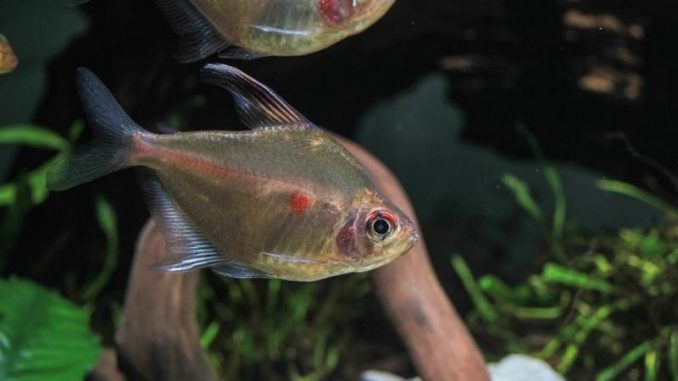
The bleeding heart tetra is a social freshwater fish that is ideal for a community tank.
Related to the black phantom tetra, lemon tetra, and 80 other species of tetra fish, the bleeding heart tetra thrives as part of a large group.
Bleeding heart tetras are native to the upper Amazon Basin. These fish live in lakes, tributaries, and streams in their native habitat and hundreds of other freshwater fish species.
Beginners and expert fishkeepers should consider keeping bleeding heart tetras because of their easy-going personalities and unique appearance.
Bleeding heart tetras are usually a dull grey or pale pink color with a red spot on their chest (hence the name bleeding heart tetra.) These fish are popular and easy to find in most pet stores and online.
TABLE OF CONTENTS
Bleeding Heart Tetra Facts & Overview
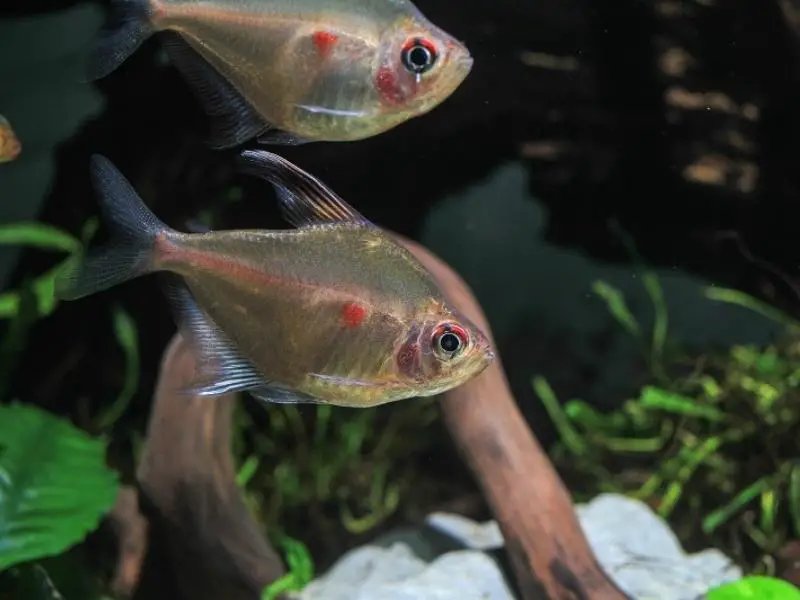
| Scientific name: | Hyphessobrycon erythrostigma |
| Common names | Bleeding heart tetra, bleeding heart fish |
| Distribution: | Upper Amazon Basin |
| Size: | Up to 2.5 inches |
| Life expectancy: | 5 years |
| Color: | Light pink, beige-orange, and silver, with a red spot on the sides |
| Diet: | Carnivore |
| Temperament: | Peaceful |
| Minimum tank size: | 20 gallons |
| Temperature: | 72–80°F (22–28°C) |
| pH: | 6.0–6.5 pH |
| Hardness: | 3–12 dGH |
| Care level: | Easy |
| Breeding: | Egg-layer |
Origin
The bleeding heart tetra (Hyphessobrycon erythrostigma) is native to the upper Amazon Basin.
Arapaima, tambaqui, candiru, and hundreds of other fish species share the same highly vegetated habitat as bleeding heart tetras.
Although bleeding heart tetras are not classified as extinct in the wild, the fish are in danger of habitat loss due to deforestation and human intervention.
However, currently, bleeding heart tetras are common both in the wild and in home aquariums.
Adult Size & Lifespan
Fully-grown bleeding heart tetras are roughly 2.5 inches long, and some females grow up to 3 inches long.
Females are usually larger than males and have more rounded tummies and longer bodies than male fish.
Bleeding heart tetras live up to five years in captivity and in the wild. Captive-bred bleeding heart tetras usually live longer than wild tetras because medicine and care are readily available in captivity.
Availability
Bleeding heart tetras are easy to find in aquarium stores across the country, and if you don’t have an aquarium store near you, you can buy these fish online.
Order fish from a reputable online store to ensure the maximum health and wellbeing of the fish in transit.
Expect to pay less than $5.00 per fish.
Most stores sell bleeding heart tetras for $4.50. You should be wary of bleeding heart tetra breeders that sell these fish for less than $3.00 because it suggests the fish are sick or have been bred in poor conditions.
Appearance & Behavior
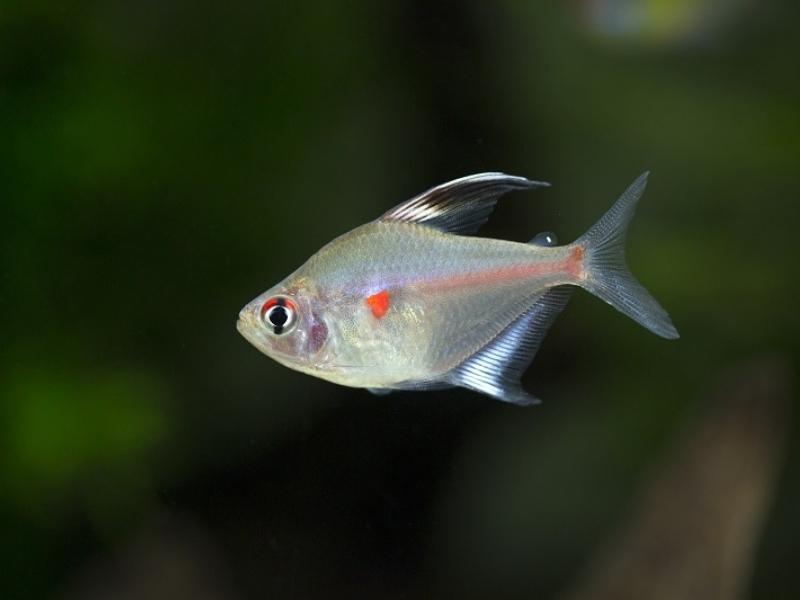
Bleeding heart tetras are small fish with striking features.
These fish have a bright red spot on both sides of their chest, giving them the name ‘bleeding heart tetra.’
These tetras also have a soft pink or red blush on their cheeks, around their eyes, and at the base of their tails.
The bleeding heart tetra fish is either a soft orange/pale pink color or a metallic lavender-silver.
Stressed fish develop a dull coloration. Bleeding heart tetras are social fish, so keeping them in isolation will cause serious distress.
Isolating your bleeding heart tetras could also result in the fish becoming aggressive and fin-nipping other fish when the bleeding heart tetras are moved back into a community tank.
Bleeding heart tetras are peaceful and social fish that are ideal for large community freshwater tanks.
Female bleeding heart tetras are larger than males. Females also display rounded bellies that grow larger when the fish are ready to breed.
It’s easy to sex adult fish, but juveniles all look the same until they reach 12 months old.
Typical Behavior
Bleeding heart tetras are usually peaceful.
However, the fish’s behavior will change depending on the rest of the fish in the tank.
Bleeding heart tetras that are kept with antisocial fin-nippers will display more aggressive behavior than bleeding heart tetras that share a tank with shy, peaceful fish.
Because bleeding heart tetras are schooling fish, they get on well with other fish and thrive in six or more groups.
If your fish starts to fin-nip other fish in the tank, you should consider moving all your fish into a larger tank.
Fin nipping is a common sign of distress amongst bleeding heart tetras that you should take seriously.
Bleeding heart tetras swim quickly around the midsection of the tank.
Because of this, you should make sure the tetras’ swimming area is clear and that there aren’t any plants or decorations that could block the midsection of the tank.
Although bleeding heart tetras are less active during the day than at night, you should feed your fish during daylight hours.
Bleeding heart tetras prefer exploring the tank when the aquarium is dimly lit and when there aren’t any onlookers.
Bleeding Heart Tetra Care
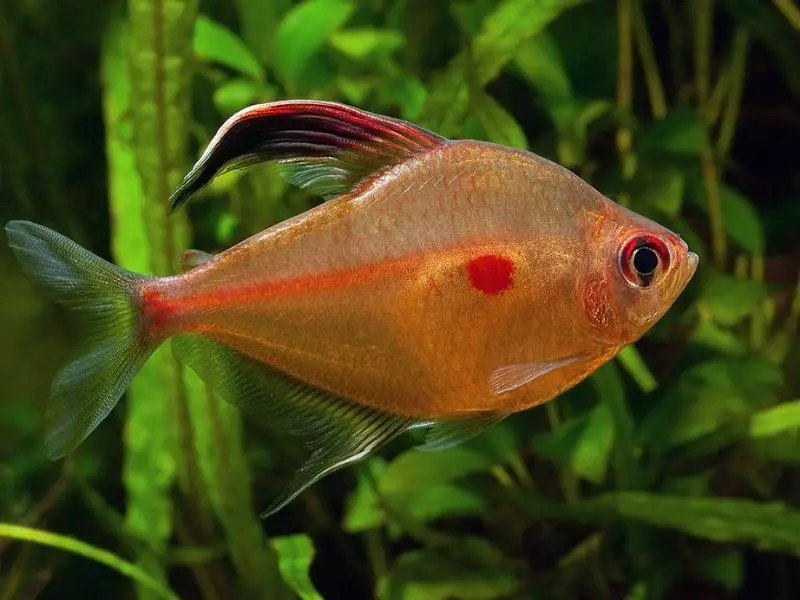
Bleeding heart tetras are easy to care for and suitable for beginner aquarists. As long as the tetra’s tank conditions are stable and well-maintained, these fish thrive in captivity.
In the wild, bleeding heart tetras live in slow-flowing, lush water full of plants and vegetation.
You should set up your tetra’s aquarium with natural plants rather than plastic accessories and scatter bits of driftwood and large rocks in the tank to create a natural and comfortable environment for the fish.
Bleeding heart tetras are opportunistic eaters, which makes feeding these fish in captivity very easy.
You should feed bleeding heart tetras high-quality pellets and fish food flakes that are lightweight and float in the middle of the tank.
Occasionally, you can feed your fish freeze-dried meat such as bloodworms and mosquito larvae.
Most aquarium fish are prone to diseases and infections associated with keeping captive fish.
Fortunately, preventing and treating common diseases is easy and inexpensive.
Disease
Freshwater fish are susceptible to fin rot, ich, and other fungal infections.
You can treat these infections by performing frequent water changes and quarantining new fish for up to three weeks.
Sanitary tank conditions are key to keeping freshwater fish healthy and happy.
Here is an overview of the most common freshwater diseases and infections.
- Ich — Look out for small white spots all over the fish’s body and a loss of appetite. You can purchase ich treatment from your local pet store. Quarantine the affected fish in a separate tank, and mix the treatment into the water of both aquariums.
- Fin rot — Inspect your fish for ragged rotting all over the fish’s fins. Use antibiotics to treat fin rot.
- Swim bladder disease — Caused by an inactive swim bladder due to disease or infection. You should feed affected fish green peas to treat the disease.
- Mouth fungus — Caused by bacteria that attaches to the fish’s mouth. Antibiotics and other readily available medication should be added to the tank water as treatment.
Habitat and Tank Requirements
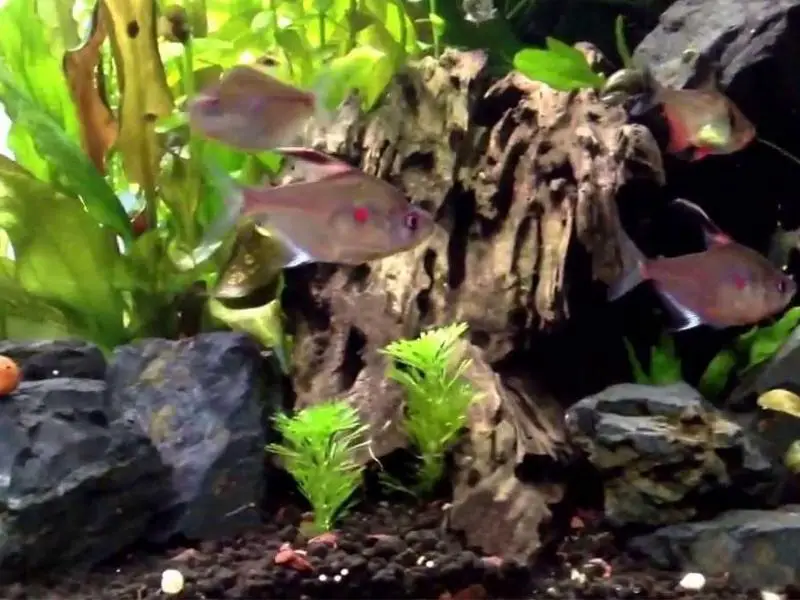
Bleeding heart tetras are native to slow-flowing streams and rivers of the upper Amazon Basin.
You should keep a tetra’s tank conditions as similar to the fish’s natural habitat as possible to ensure your fish live to its full potential.
Tank Conditions
Bleeding heart tetras require specific tank conditions to thrive.
Because of this, you should check the aquarium conditions regularly and make sure the aquarium is in line with the recommendations below.
Aquarium Temperature and pH Levels
Check the water temperatures and acidity levels daily, and ensure the water stays between 72°F to 80°F with pH levels of between 6.0 and 6.5.
A constant temperature of 74°F is ideal for bleeding heart tetras.
Substrate
You should add a thin layer of the sand substrate to the tank.
Bleeding heart tetras are mid-dwellers, but they often dive down to the bottom of the tank to scavenge for food.
Because of the tetra’s scavenger instincts, the tank should be lined with a soft substrate to avoid damaging the fish.
Filters and Bubblers
Fit the tank with a high-quality water filter to help keep the water clean and fresh. Bleeding heart tetras live in slow-flowing water in the wild, so water bubbles are not necessary.
Tank Size
Make sure to invest in a 20-gallon aquarium or larger one.
Large tanks are ideal for bleeding heart tetras because these fish need enough room to swim in, and they also need plenty of plants and decorations in the tank.
Plants and Decorations
The upper Amazon Basin is full of freshwater plants like the Guatteria scandens, Landolphia paraensis, and Strychnos blackii.
Although these plants are native to the bleeding heart tetra’s natural habitat, these plants are not suitable for a home aquarium.
The following plants are ideal for a bleeding heart tetra tank:
- Cryptocoryne beckettii
- Aponogeton ulvaceus bulb
- Dwarf aquarium lily
- Amazon sword
- African water fern
- Java fern
Decorate the aquarium with natural driftwood and large rocks.
Tank Mates
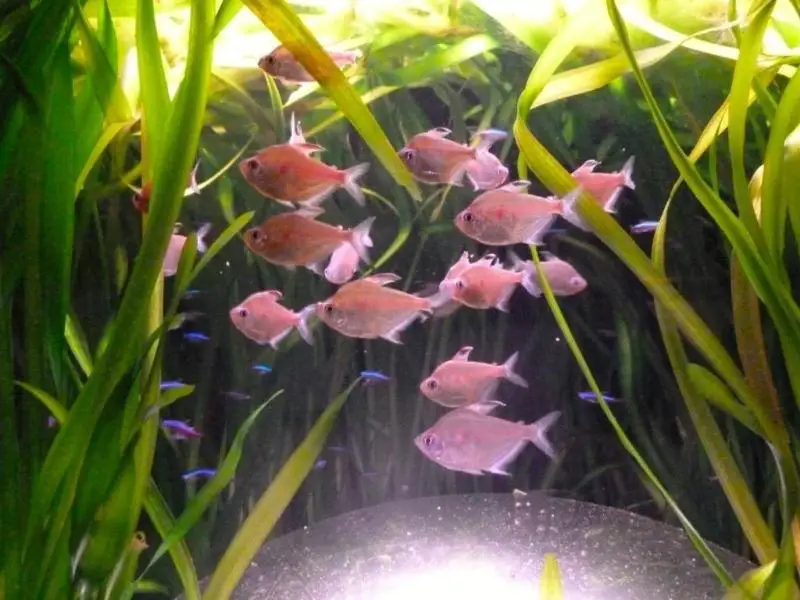
Bleeding heart tetras are social fish that do well in community tanks.
You should keep at least six bleeding heart tetras in an aquarium together, and avoid keeping aggressive fish with your bleeding heart tetras to prevent fighting and fin nipping.
Same-sized tank mates with behavioral traits similar to bleeding heart tetras are ideal for a community tank.
Bleeding heart tetras mimic other fishs’ behavior, which is why aggressive or territorial tank mates are not suitable in a bleeding heart tetra tank.
Consider the following tank mates in a bleeding heart tetra aquarium:
Non-fish tank mates like aquarium snails and shrimps make interesting additions to a bleeding heart tetra tank.
Although bleeding heart tetras won’t harm non-fish tank mates, you shouldn’t add shrimps, snails, or crabs into the tank if you have aggressive fish in the aquarium.
Diet and Feeding
Bleeding heart tetras are opportunistic eaters, which means that they eat as and when the opportunity arises, both in the wild and in captivity.
The tetra’s big appetite can make this species overweight, so only feed the fish in your tank twice daily to prevent overeating.
Feed bleeding heart tetras fish food flakes, pellets, freeze-dried brine shrimp, and mosquito larvae.
Fish food flakes and pellets should make up 70% of your fish’s diet. Incorporate live or freeze-dried food into your fish’s diet as a snack.
Breeding
Bleeding heart tetras are easy to breed in captivity.
You will need a separate breeding tank to breed your fish successfully, and the breeding tank should contain accessories and plants so that the fish feel comfortable.
Follow these steps if you want to breed bleeding heart tetras in captivity:
- Decorate the breeding tank with live plants such as spawning mops and accessories. You should also line the tank with a soft sand substrate.
- Keep the water temperature in the breeding tank at 72°F and make sure the water is less acidic than the community tank. Never let the pH level of the water drop below 6.0.
- Once the breeding tank is set up, add the fish to the tank and raise the water temperature slightly.
- The males and females in the tank will begin to spawn. The females in the tank will swell, which shows that the breeding process is going well.
- The female bleeding heart tetras will lay their eggs among the plants in the tank. Some eggs will stick to the plants’ leaves, while others will sink to the bottom of the tank.
- Remove the adult fish immediately once the eggs are laid.
The eggs take up to three days to hatch. Don’t feed the fry until they are free-swimming.
You should start to feed free-swimming fry powdered fry food until they are big enough to eat baby brine shrimp.
Should You Get a Bleeding Heart Tetra for Your Aquarium?
You should consider getting bleeding heart tetras if you have a large freshwater tank and you’re looking for a striking and peaceful addition to the aquarium.
With that said, bleeding heart tetras should live in groups of six or more, so if you don’t have the tank space for so many fish, then this species isn’t right for you.
Bleeding heart tetras are eye-catching fish with playful personalities. These tetras are usually easy-going and require minimal care, so even beginner hobbyists can enjoy caring for the fish.

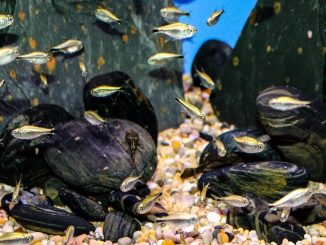
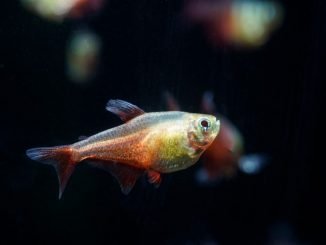
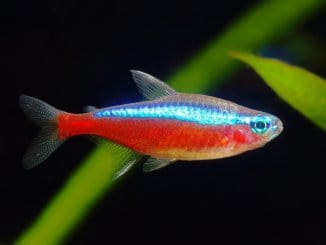
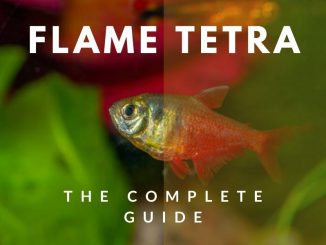
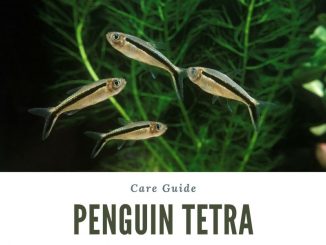
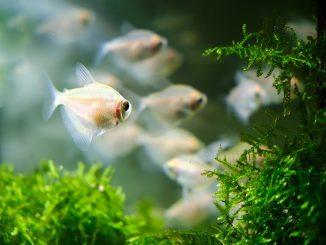
Be the first to comment